You turn on the faucet and there it is: as much water as you could possibly want. But then, as a prepper, you think, “What about the day when I turn it on and nothing comes out?”
Many people buy bottled water for their stockpile, and that’s fine, but you can also store tap water for survival and it won’t cost you a dime beyond your monthly water bill, if you have one.
There are some precautions that you need to take, but otherwise, turn on the tap, fill your containers, and store away!
Use Clean Containers
Even a few bacteria will quickly travel and multiply in room temperature water. That’s why they say to turn the sink in a public bathroom on and off with a towel. Even if you’re the only one who drank out of the bottle, the contents of the bottle can spoil and contaminate the tap water stored in it and make it undrinkable.
To avoid this, run the containers through the dishwasher using the hot water cycle, or clean them with hot soapy water just like you do your canning jars. It’s important to use containers that are easy to clean and don’t have little nooks and crannies that can harbor bacteria.
This proven-to-work portable device which provides clean fresh water 24/7!
Containers to Store Tap Water
It’s important to choose the right container to store your water in. Some people use milk jugs but I wouldn’t recommend it for a number of reasons. They’re relatively flimsy, which makes them easy to puncture.
They’re also difficult to get clean because of the narrow handle. The lids nowadays often pop off. You don’t want a container that’s going to easily leak, and milk jugs are just a flood waiting to happen.
Some containers that are good for storing water include 1- and 2-liter soda bottles, juice jugs, and, if you want to store a larger quantity, 5-gallon food-grade buckets are great. They’re sturdy and stackable. You can also buy the sturdy camping water containers at your local superstore. They’re a bit expensive, but they’ll hold water for years.
Glass containers are always a good option too, though they’re heavy and breakable.
Make sure that all of your plastic containers are BPA-free so that no chemicals will leech into your water. Using opaque containers is good too, because direct sunlight will cause algae and the like to grow, just in case there are any spores at all in your water.
Video first seen on NoBudgetHomestead.
Store Your Water in a Cool Location Out of the Sunlight
Sunlight promotes the growth of pathogens, so store your jugs out of direct sunlight. Sun also breaks down some plastic containers, which is why it’s important to use BPA-free containers. Also, hot water takes up more space than cool water, so you may have a problem with your containers swelling and leaking – especially if you’re a die-hard believer in milk jugs.
Remember that even if your containers are clean when you put the water in them, they’re not sealed so pathogens can still get in.
Add a Few Drops of Bleach
If you have city water, your water already has chlorine in it that kills pathogens and prohibits the growth of more. If you have well water, you may want to add a few drops of bleach to serve the same purpose. To be more exact, add 2 drops of bleach per quart of water to kill pathogens.
You may be thinking, “Why do I have to worry about this if my containers are clean when I put the water in it?” Well, there are a couple of reasons. Even if your containers are completely sterile when you fill them, they’re probably not completely air-tight, which means that pathogens can still find a way in.
A few drops of bleach will make it a very bad day for any germs that happen to choose your container!
That being said, if the container isn’t airtight, the chlorine will break down and leave it vulnerable to bacteria, which leads us to our next subject.
Rotate
Water doesn’t go bad, but it can get slightly acidic after a while. That’s because a minuscule percentage of it chemically changes to carbonic acid when it’s exposed to air. This makes it a prime breeding ground for bacteria. Considering that and the fact that bleach or chlorine breaks down, you should probably rotate tap water every six months or so.
This isn’t necessary for commercial water because it’s sealed, but it’s still a good idea to use the FIFO (First In, First Out) method, if for no other reason than to keep in practice.
There used to be expiration dates on commercially bottled water, but the CDC lifted the requirement due to lack of evidence that water goes bad. Remember though, that this water is sealed so that air can’t get in it, and the water and container are both sterile when the water goes in. That’s not the case with tap water.
Empty, clean, and refill your tap water containers at least every six months. Use the water that you’re dumping as grey water to water your plants or whatever.
Make Ice
If you have the room in an extra freezer, store some of your water in there. Frozen water bottles will help keep your frozen food cold longer if you lose power. They’re also great to toss in a cooler in place of messy loose ice, and if you’re heading to the gym or hiking, or anywhere really, a bottle of ice will melt so that you have nice cold water for a few hours instead of drinking it warm.
If you use the small bottles, they’re also great for ice packs.
Store in Different Sizes
You may have noticed that I’ve mentioned different size options for your bottles. Why choose just one? You can store large quantities of water (i.e. 5 gallons) for use by the entire family for a day, then store gallons to have on hand to use for cooking or personal use throughout the day, and store individual servings such as water bottles to carry with you on your person.
Having water stored in 5-gallon buckets or 55-gallon drums is great if you’re staying in, but what about if you have to bug out? That’s a danged heavy thing to tote around. Also, that many large water containers will be tough to keep inside and tough to hide outside.
Storing tap water is a perfectly reasonable, safe, cheap way to prepare for disaster. As long as you store it properly and rotate it, there’s no reason why it isn’t every bit as safe as store-bought water. Between it and rainwater, which we show you here how to collect, you can store as much water as you need to survive for at least a while.
This article has been written by Theresa Crouse for Survivopedia.




























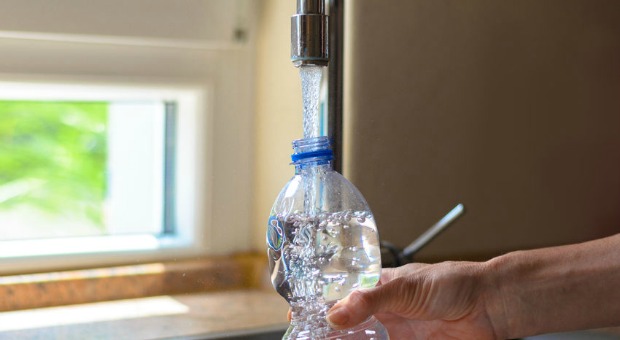

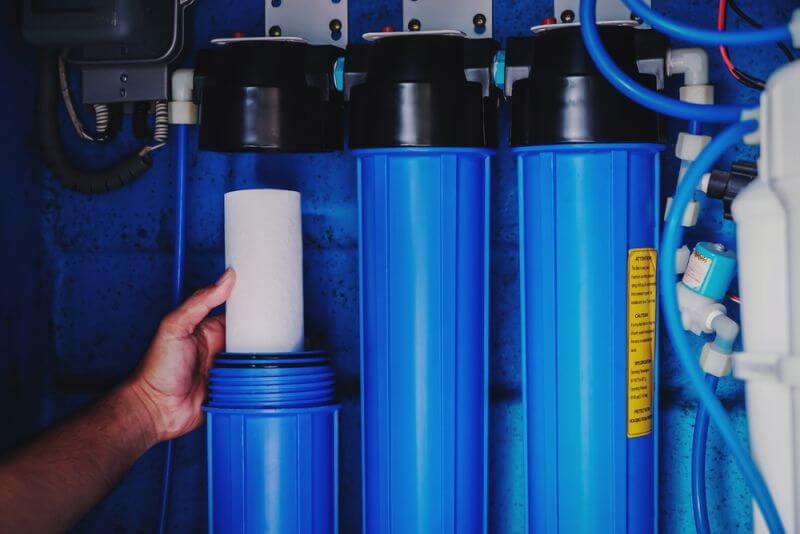

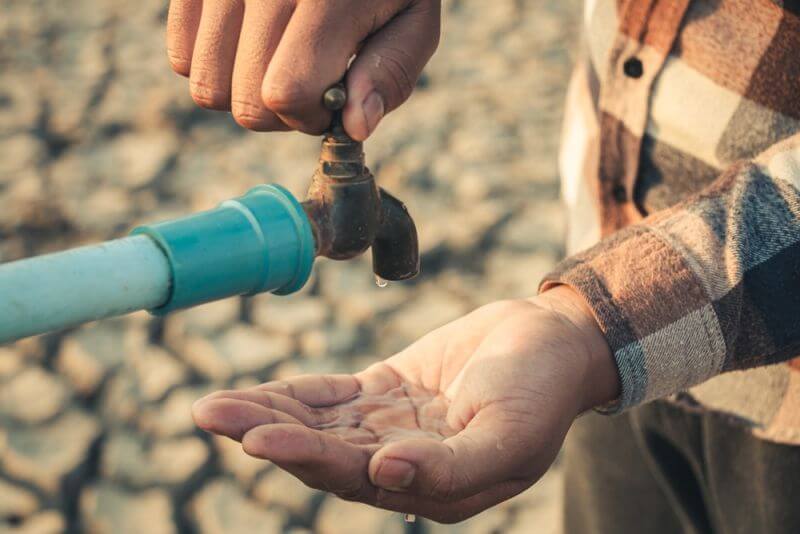
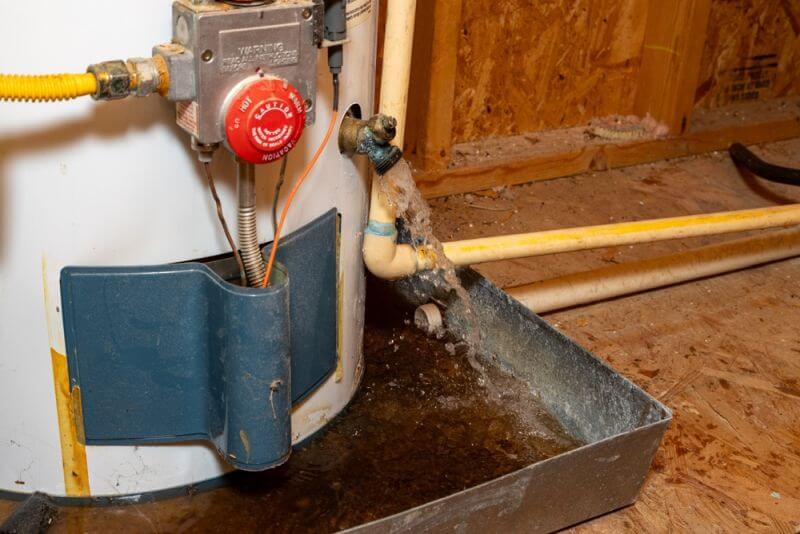
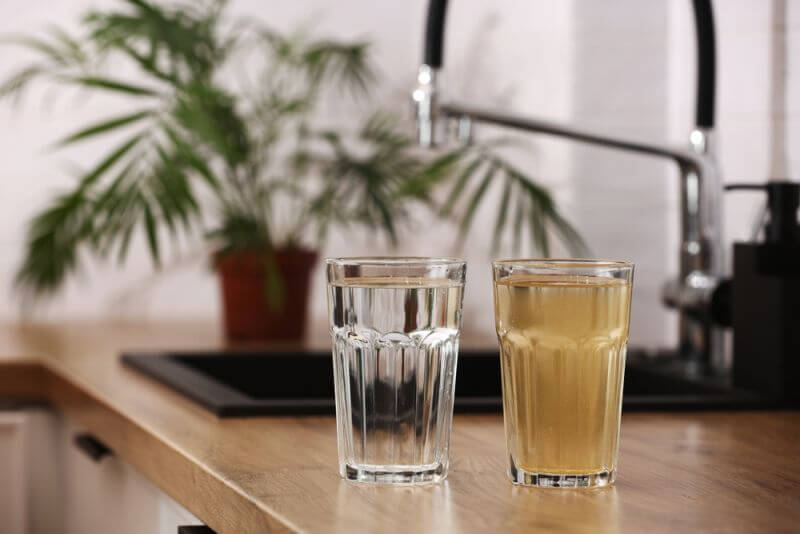







































What if you have well water?
Is there a different method for
Purifying that water?
Is the Tues forecast in addition to Mon? or the total of both?
“….. a minuscule percentage of it chemically changes to carbonic acid when it’s exposed to air. This makes it a prime breeding ground for bacteria……..”
Can you show documentation for this?
Thank you for all your good articles, Theresa.
I like to store my R.O. filtered water which is then run through a De-I cartridge in the one gallon glass wine bottles (with handy glass handle). If you fill these bottles 100% to the top with water then put them in a hot place, like a closed car, the bottom of the bottle will break off before the metal cap breaks. I now leave at least an inch of airspace for expansion.
Richard
I enjoyed the article. One thing I do that people might find helpful when cleaning out containers to store water in, is the following. Buy a box of the powdered dish washing detergent used in dishwashers, when you clean your bottles, use hot water and liquid detergent first to clean the bottles, then use some of the dish washing powder to finish cleaning them. When you use plain liquid dish soap it is hard to rinse all that soap out, if you notice there are soap bubbles left if you don’t rinse numerous times, which runs up your water bill. Using the powder after will cut the residual soap that causes the bubbles.
I used to recover 5 gallon cooking oil bottles from a friend that had a local tavern and used them for his deep fryer. The liquid detergent would not completely remove all the oil, and there was always soap suds left as well. I tried the dish washing powder and found it not only removed the suds, but also the remaining oil, there was absolutely no oil residue left. You must use very hot, if not boiling water during the entire process too. This works great.
Also, as for length of storage of bottled water, when I was a kid, (grew up in the 50s and 60s) after all the Civil Defense programs ended, we found that locally there were supplies stockpiled. The water was stored in 55 gallon drums, inside a clear plastic bag with the top basically twisted and a wire tied around it to hold it closed. We discovered these in the late 60s and they had a date on them from the early 50s, so a minimum of 10 years, and the water was still good.
So I used that knowledge to not rotate like most people recommend, I just check once in a while and add a few drops of bleach to the water I have stored and reseal. I have used water I have stored years after originally storing it with no problems.
Theresa
I have many 5 liter wine boxes, with interior plastic bags, that have a valve. I can fill them with water. There is residual wine. Even though there is clorine in tap water, do you think some bleach or ? should be added?
You forgot to mention doing like the pioneers did in their barrels when heading west with s wagon train. DROP A PURE (99.9%) SILVER IGNOT, REAL SILVER DOLLAR-/not a zinc silver clad silver dollar. Pre 1950 will do nicely. The finer the grade–uncirculated or mint–the better. (From the pioneer book)
That has been used for centuries on English sailing vessels , that would take months to sail round the globe ,
In large wood barrels they would store the water with purest of , silver ingots to keep the water from spoiling.
I’d recommend taking a felt marker and dating each bottle.
Where do I buy 5 gallon or less containers that don’t leich contaminates into the store water over 5 years long — Clay
Where to buy containers that do not leach into drinking water — Clay
Yes, one the one hand, algae can grow quickly in water in your pool warmed by the sun with low chlorine levels. On the other, I have read that one of the ways to purify water, as tested in Africa, is to put it in milk containers in direct sun with something reflective behind it. The UV spectrum sterilizes bacteria and kills the critters one would use filters to get rid of when camping or in survival circumstances. So is avoiding sunlight as suggested really a good thing, or is it the heat that turns pools various nasty shades that should be avoided?
Walmart sells excellent 6 and 7 gallon food grade plastic containers in the sports and camping section, for $14.95. I’ve been using them and they work well.
I always give the plastic jug a squeeze and hold it while putting the cap on. This way, if you get some expansion, due to temperature change, the jug won’t split.
I’ve been filling the water containers I purchase at Walmart (distilled) with tap water and mark it TAP for years! I do use it in rotation as I also put the fill month on it. So far I have only lost two that leaked! It works!
Clean used plastic water bottles you have bought from the store and fill them with tap water at home. Place the bottles where direct sunlight will be on them for at least 12 hours. The sun’s UV Rays will destroy any bacteria that might be in the bottle.
I know collecting rain water is illegal, but what about storing tap? What are the legalities associated to collecting tap water?
Is it ok or unrecommended to seal my gallon water containers with gorilla tape or some else. I also have a large wooden box in my back garage. I was going to include styrofoam and stack them with a pallet underneath. Suggestions. I’ve already learned more than I knew. After 9/11 immediately filled 50 five gallon buckets and put in storage. Thank you